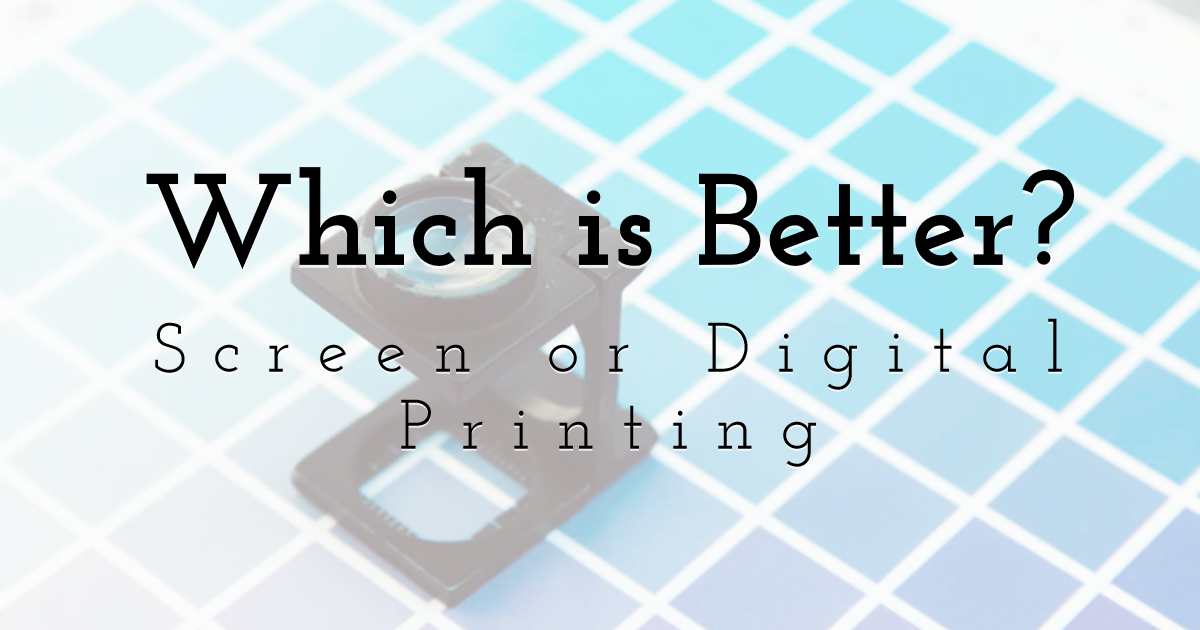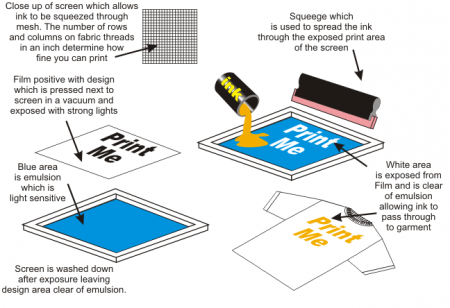The 10-Second Trick For Tx Tees
The 10-Second Trick For Tx Tees
Blog Article
The smart Trick of Tx Tees That Nobody is Talking About
Table of ContentsTx Tees Can Be Fun For AnyoneTx Tees - TruthsAll About Tx TeesThe 10-Minute Rule for Tx TeesSome Known Details About Tx Tees Tx Tees Things To Know Before You BuyTx Tees for Dummies
Include up other expenses, like the number of utilities it takes to run the shop and the price of ink and solution per layout. Take the print below.The solution needs to just be a couple of cents given that you 'd just need to layer one display for this task. So exactly how much should you charge per tee shirt to make a profit? Normally, printers attempt to make up to 45% earnings on a print job. Here's a table to assist you establish that: complete cost per thing percent of desired profit as a decimal (instance:.25 or.45) revenue made per thing per job Now let's discuss the earnings of DTF.

With DTF, you can print a handful of shirts, or just one. Both screen printing and DTF have their particular niches in the world.
More About Tx Tees
The most effective means to know? Ask about and see what print shops like your own are doing. custom screen printing. Try both out and see which you like better
When you're selecting what sort of printing approach to utilize for printing your art work layouts on your garments, it's crucial that you recognize the differences in between these 2 strategies so you can optimize results while reducing prices. Display printing is one of the most frequently used strategy for publishing layouts on fabrics.
DTG printing is likewise called spot or straight to garment printing because it publishes just what is needed as opposed to making a screen as screen printers do. https://worldcosplay.net/member/1743892. Screen printing works by screen filler squeegee screen printing ink screen mesh display, then transferring the image to garment utilizing heat and/or pressure
The DTG printer uses unique dye-sublimation inks that are applied into a pre-designed image by an electronic printing system. The inks enter into the material, allowing for lively colors and remarkable detail. It's likewise referred to as area or direct to garment printing since it publishes just what is required rather than making a screen as screen printers do.
The Facts About Tx Tees Uncovered
It's much quicker - you can print a fullcolor picture in minutes, as opposed to hours for screen printing. Second, there's no established up time or prices involved - you can publish any type of style you such as, without having to develop a display. Third, there's no waste - since screen printers display print one style at a time, they have to evaluate each shade separately.
The paper is extremely costly and can just be utilized as soon as. Once it's published on, it has actually to be disposed of. - The initial acquisition rate is less than the ahead of time investment of DTG printers- You can print multi-color styles one display at once as opposed to having to print each shade independently like DTG printing.

Some Known Incorrect Statements About Tx Tees
However, as opposed to using display mesh as screen printers do, dye sublimation printers utilize laser innovation to move your pictures onto garments or paper. A warm process transfers the dye from its solid-state straight right into the gas phase which in turn integrates it onto fabric substratums when they are quickly heated up to high temperature levels under high pressure.
Sublimation printing is green. It utilizes less water than screenprinting, and since it doesn't involve using damaging solvents, it's secure for all types of apparel. The dye sublimation inks are also odorless when treated, unlike screen printers that utilize damaging chemicals during the screen printing procedure that leave behind an undesirable odor.
They additionally save cash on expensive devices like direct exposure devices because dye sublimation printers don't call for a UV direct exposure device or a flash remedy oven that is usually used in display printing (custom t-shirt design). What is straight to garment printing (DTG Printing)? DTG printing is an electronic screenprinting process that publishes directly onto fabric using specialized inkjet printers
Some Known Details About Tx Tees
DTG printing uses several benefits over standard screenprinting, including the ability to publish photographic high quality images, better color vibrancy, and the capability to publish styles on darker textiles. DTG printers work by heating the fabric ink until it becomes a gas. The gas after that penetrates the fabric, bonding with the fibers to create an irreversible print.

Display printers merely prepare their screen then start printing up until they lack item or ink.- There is a large range of skilled screen printers all over the globe, which can be valuable for beginners. - It's a slower procedure - screen printers commonly need to wait on the ink to dry before they can print the next shade- Display printers call for hand-operated labor, so there's a higher understanding curve and it takes longer to produce a top quality layout- Screen printing isn't as precise as DTG printing, so you may obtain some "bleeding" of shades from one component of the image onto another if not done correctly.
More About Tx Tees
Instead of using display mesh as screen printers do, color sublimation printers use laser modern technology to transfer find your pictures onto garments or paper. A warmth procedure moves the dye from its solid-state directly right into the gas phase which subsequently integrates it onto fabric substrates when they are swiftly heated up to heats under high pressure.
Sublimation printing is green. It uses less water than screenprinting, and since it does not involve making use of dangerous solvents, it's secure for all kinds of clothing. The color sublimation inks are additionally odor-free when healed, unlike display printers that use dangerous chemicals throughout the display printing procedure that leave behind an unpleasant smell.
They likewise save cash on pricey equipment like direct exposure devices given that dye sublimation printers do not require a UV exposure unit or a flash treatment stove that is generally made use of in display printing. What is direct to garment printing (DTG Printing)? DTG printing is a digital screenprinting procedure that prints straight onto fabric using specialized inkjet printers.
What Does Tx Tees Mean?
DTG printing supplies numerous advantages over standard screenprinting, consisting of the capability to publish photographic high quality photos, higher shade vibrancy, and the capability to print layouts on darker textiles. DTG printers work by warming the textile ink till it transforms into a gas. The gas after that penetrates the textile, bonding with the fibers to develop a permanent print.
Report this page